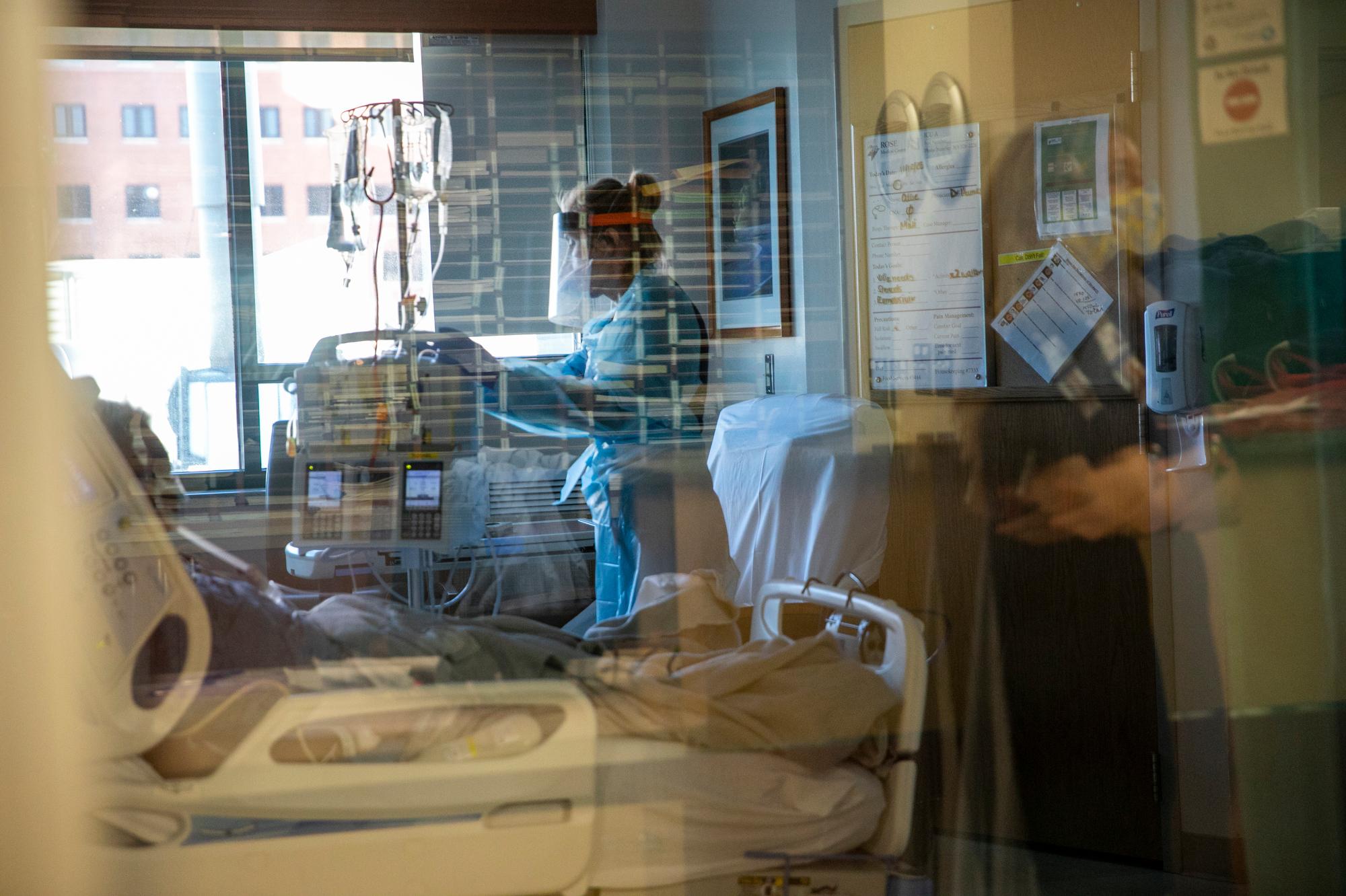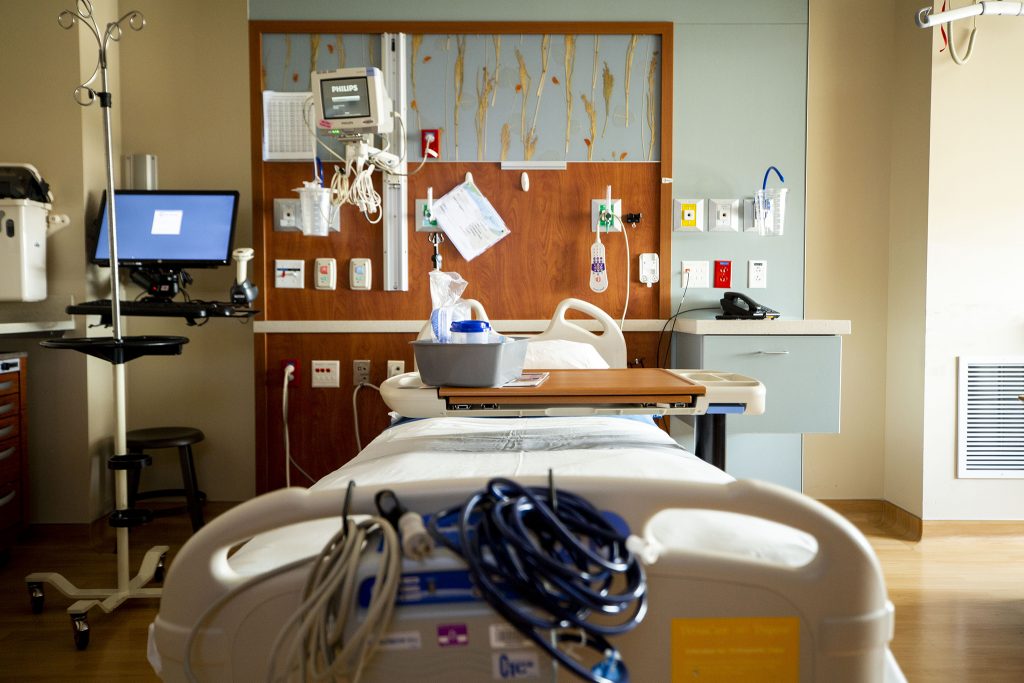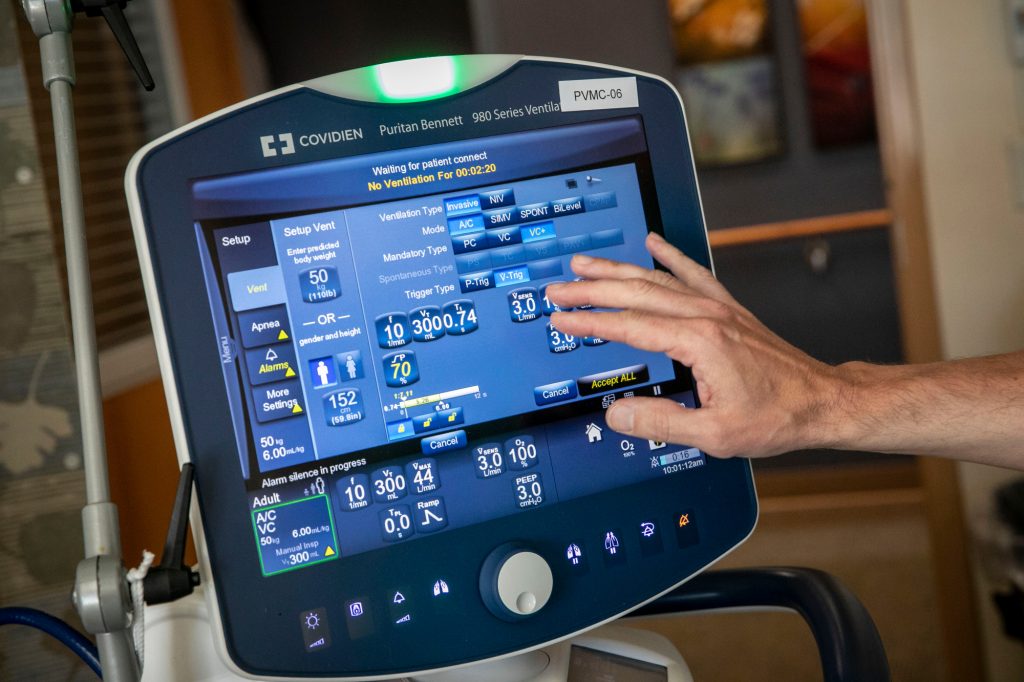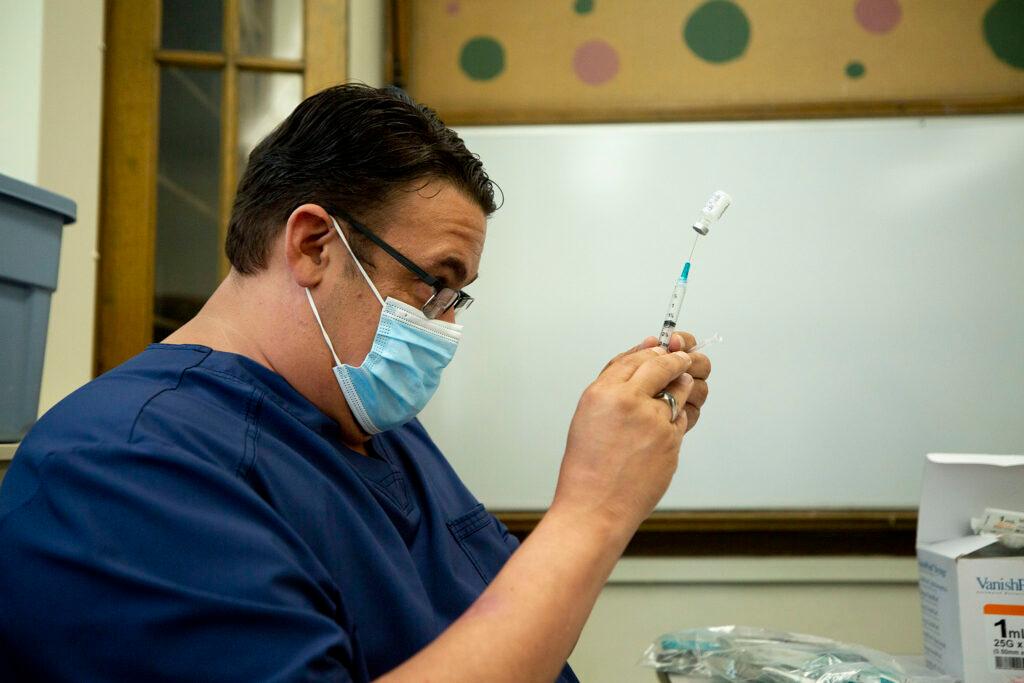
The fifth wave of the coronavirus pandemic is climbing to levels not seen since the beginning of 2021, just as colder weather, which will drive more people indoors, is around the corner.
Particularly for the unvaccinated, many trends are clearly pointing in an unfavorable direction.
Confirmed COVID-19 hospitalizations hit 944 Monday — the highest figure since the state recorded 952 confirmed hospitalized cases on Jan. 1. For context, that’s still just half of Colorado’s pandemic peak of 1,847 back on Dec. 1. Just fewer than 80 percent of the hospitalized patients are unvaccinated.
The pandemic is still hitting older Coloradans hard, with those 60-79 making up about 39 percent of hospitalized patients in the week of Oct. 3. That week they were the hardest hit group.
The 7-day positivity rate, a metric of transmission, is at 7.45 percent, still well above the critical threshold of 5 percent. It had dipped below 6 percent for three days starting Sept. 24.

"We're not just full with COVID right now, we're full with everything"
Dr. Diana Breyer, a pulmonary critical care physician with UCHealth, says ICUs in northern Colorado are busy. “The difference this time is that we found that there are consequences to people not coming to the hospital for other diseases,” said Breyer, who is the chief quality officer for the northern region of UC health. “So we're not just full with COVID right now, we're full with everything.”
She said the system welcomes the additional patients because they’re seeing people who were delaying care for strokes or heart attacks or infections that ended up being much more severe than they thought. Some people were somewhat afraid to come in.
But the rise comes with hospital staffing as tight as ever, meaning the quality of care could suffer.
“This time I don't have worries about us running out of ventilators,” she said. “I worry about our staff. We are going into this [fall and winter] with less staff than we had the last time. Some people have left medicine,” Breyer said.
Thirty-five percent of hospital facilities in the state report anticipating staffing shortages within the next week, according to the state dashboard.
“We are starting to see our hospitalizations trending back up in the wrong direction,” state Incident Commander Scott Bookman told reporters last Friday. Over the previous few weeks the state recorded some relatively steady movement down, even if day to day there was some variability.
“But we are now seeing an upward trend,” Bookman said.

Colorado's COVID-19 cases are going up
Coronavirus cases overall went up by 600 cases last week from the week before, according to the state dashboard. The CDC recommends that even vaccinated people wear masks indoors in public spaces when the case rate exceeds 50 per 100,000 residents. Last week, Colorado’s was 231.
Public health officials aren't sure why coronavirus case rates remain stubbornly high, but say it may have to do with the change in seasons and the way people are now mixing.
“We know that fall is a transition time and it's really difficult to predict what's going to happen as more individuals move indoors,” said Dr. Rachel Herlinhy, the state epidemiologist. ”And our behaviors change as the fall season goes on and moves into winter.”
Nationally, cases are now dropping. But in a heat map on the NYTimes website, a group of northern states, including Colorado, is seeing cases on the rise, as other regions, like the South, are seeing them drop. The site reported cases in Colorado are up 22 percent the last two weeks, while nationally they’re down 19 percent.
High levels of vaccination are protecting some parts of the state, but in the eastern plains, San Luis Valley and southwest virus case rates are higher. Herlihy said the state health department is seeing high variability in virus trends and “lots of complexity in the data right now, lots of epidemics within the epidemic occurring here in Colorado.”

The majority of patients hospitalized are unvaccinated
Beyond hospitalizations, another emerging and alarming trend: the numbers of COVID-19 patients dying. And many of them are dying at a relatively young age.
Now that more data has come in, the week of Sept. 26 has emerged as the deadliest in the state since the week of January 17, with 123 deaths.
Last week, 40-59 year-olds accounted for a little more than 36 percent of the deaths. Through the pandemic, that group had been about 11 percent of deaths. But older Coloradans, people 80+, who made up nearly 49 percent of deaths during the pandemic, were just 27 percent last week.
It's all about vaccines, said Dr. J. David Cowden, the director of pulmonary medicine for Banner Health’s western region, which covers northern Colorado.
“Vaccination prevents hospitalization,” said Cowden. “Still overwhelmingly unvaccinated patients are those that are hospitalized.”
Sixty percent of the state’s population is now fully vaccinated, and state data shows that a vaccinated person is 3.4 times less likely to contract COVID-19, and 4.3 times less likely to be hospitalized if they do catch it.
That’s even as the highly contagious delta variant or sub lines of it now make up all of the state’s cases.
“Delta has demonstrated to us that it has clear advantages over other variants in being transmitted from person to person,” Herlihy said, “and because of that, it's really sticking around.”
- Gov. Polis on vaccinations and masking in schools
- Wearing a mask and getting vaccinated helps reduce COVID case rates among school-aged kids
- Colorado wants to send free, rapid COVID tests to your home. Hoere's how to sign up
- Big events with big crowds are back in Colorado, but the risk of COVID never left








